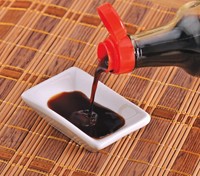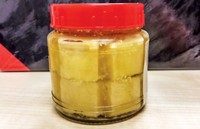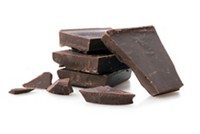Advertisement
Grab your lab coat. Let's get started
Welcome!
Welcome!
Create an account below to get 6 C&EN articles per month, receive newsletters and more - all free.
It seems this is your first time logging in online. Please enter the following information to continue.
As an ACS member you automatically get access to this site. All we need is few more details to create your reading experience.
Not you? Sign in with a different account.
Not you? Sign in with a different account.
ERROR 1
ERROR 1
ERROR 2
ERROR 2
ERROR 2
ERROR 2
ERROR 2
Password and Confirm password must match.
If you have an ACS member number, please enter it here so we can link this account to your membership. (optional)
ERROR 2
ACS values your privacy. By submitting your information, you are gaining access to C&EN and subscribing to our weekly newsletter. We use the information you provide to make your reading experience better, and we will never sell your data to third party members.
Environment
Food That Smells Too Good To Eat
Enhancing the aroma of food might help dieters eat less
by Sophie L. Rovner
March 15, 2010
| A version of this story appeared in
Volume 88, Issue 11

Dieters will be delighted if food research under way in the Netherlands fulfills its promise. There, scientists have shown that manipulating food aroma can curb appetite. These findings could enable manufacturers to produce foods that help consumers stick to their diets.
"You can smell aroma in two ways," notes Rianne Ruijschop, who is leading the project at Nizo food research, a contract research company with headquarters in Ede. Aroma inhaled through the nose takes the so-called orthonasal pathway. Aroma is also released from the mouth into the nasal cavity during chewing and swallowing of food and drink; this pathway is known as the retronasal route.
Aroma compounds delivered via these two different routes stimulate different sectors of the brain, Ruijschop says. The orthonasal route activates brain regions associated with wanting and anticipating food. The retronasal route activates areas in the brain that are linked to a sense of reward, leading to sensations such as satiation.
To investigate the association between retronasal aroma release and satiation, Ruijschop and her colleagues invited local residents to come to Nizo's lab. There, the volunteers were exposed to a variety of aromas while eating or drinking specific foods under carefully controlled conditions.
In the initial experiment, the volunteers were given 10 sips of a sweetened milk drink over a 10-minute period. Each sip was accompanied by a retronasal puff of strawberry aroma from an olfactometer, a device that delivers an aroma through a tube into a volunteer's nasal cavity. Five minutes later, the volunteers were offered a liter of strawberry-flavored milk to drink until they felt comfortably full.
The experiment was designed to measure whether exposing people to longer puffs of aroma had a different effect on satiation—and consequently on consumption—than shorter puffs, which mimic natural aroma release from the drink. The researchers figured that extending aroma exposure would lengthen stimulation of nasal aroma receptors, so consumers would need fewer sips of the drink to feel satisfied.
The experiment didn't yield the results the researchers had anticipated, however. "We expected to see some differences in intake" when people were stimulated with longer puffs, says Ruijschop, "but we did not see any effects."
The researchers concluded that sensory effects didn't occur because aroma wasn't manipulated during the entire period of consumption. The Nizo team has now modified the experimental setup so that puffs of aroma accompany every mouthful for as long as a volunteer wishes to continue drinking or eating a particular food.
In one such test, people consumed a bland soup while the olfactometer delivered a tomato aroma. By lengthening the duration of the aroma exposure by six times, the researchers gave the soup a longer aftertaste. This slight alteration in aroma profile led people to eat almost 10% less soup.
"That's quite huge," says Ruijschop, who recently published a review about aroma and satiation (J. Agric. Food Chem. 2009, 57, 9888). "We demonstrated that retronasal aroma-release perception had an effect on satiation. So people felt fuller, felt less hungry, and stopped eating sooner." Furthermore, she says, "you can apply this concept to all types of food products."
The Nizo investigators have discovered that aroma quality also affects satiety. In one of their studies, consumers ate yogurt paired with strawberry aroma. The experiment compared two aromas, one containing a single component—ethyl butyrate—and the other containing 14 compounds in addition to ethyl butyrate, including ethyl hexanoate, methyl cinnamate, and γ-decalactone.

Both aromas "smelled like strawberry," Ruijschop says, but "the more complex aroma cued for satiation. People felt full quicker." She attributes the effect to the fact that a single aroma compound stimulates just one type of nasal receptor that cues for satiation, whereas a collection of aroma compounds can trigger multiple types of these receptors to deliver reinforcing messages of satiation.
Adam Drewnowski, a University of Washington nutrition professor who studies food-related sensory science, finds that, for him, the Nizo results ring true. "I have always thought that small portions of intensely flavored foods actually make you eat less," he says. "For example, compare eating milk chocolate with Rice Krispies and some peanuts and caramel. You could eat two or three bars easily. But if you take a very intense, dark, bitter chocolate with some dark orange peel, you eat a square and that's enough." That might mean that a small meal of four or five dishes whose flavors are complex and intense, such as Spanish tapas, "would be more satiating for fewer calories" than a large serving of pizza or macaroni casserole, he concludes.
Although the results look promising, all of the Nizo studies done to date measure the effect of aroma manipulation on a person during a single visit to the lab, notes Ruijschop. "The question is, what happens in the longer term?" she asks. "Is the food response and feeling of fullness the same if you use this concept for days or weeks?" She plans to monitor food intake over a week or two or even longer by having volunteers return to her lab repeatedly.
If aroma effects on satiation and consumption prove to be lasting, manufacturers could utilize these findings by adjusting the quantity or quality of the aroma released by food products, according to Ruijschop. For instance, they could increase the complexity of a food's aroma by upping the number of flavor compounds it contains while maintaining the same sensory perception. Food manufacturers could also lengthen a food's aftertaste by encapsulating aroma compounds for controlled, slow release of flavor. Or they could alter the texture of the food because liquids release less aroma than solids, Ruijschop says. Thickeners that make liquid foods such as beverages a bit more viscous would therefore heighten their aroma release.
Such foods would "support people who do not want to overeat," Ruijschop says. "People usually still have hunger when they consume low-calorie food. But you can enhance their feeling of fullness just by changing the aroma of the foods, making foods more rewarding."





Join the conversation
Contact the reporter
Submit a Letter to the Editor for publication
Engage with us on Twitter